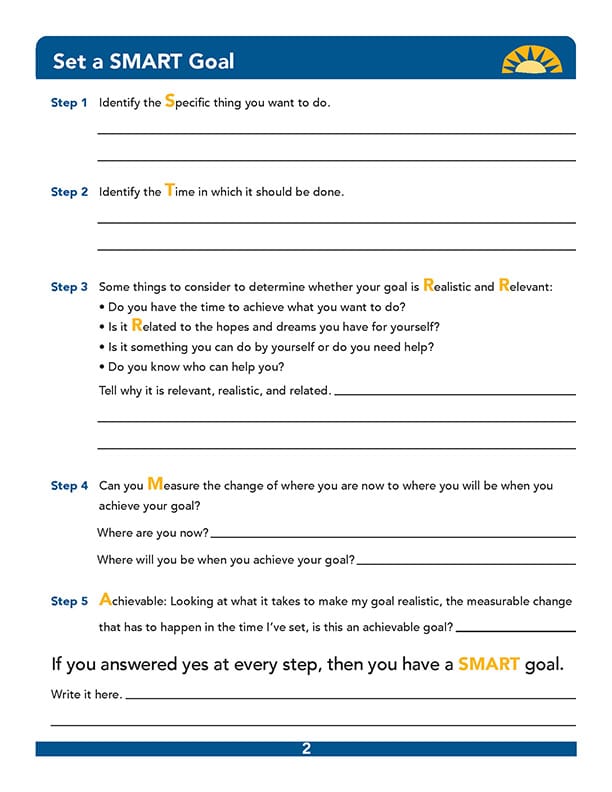
At the beginning of a school year, educators can get students excited about the learning ahead by helping them figure out what they want to achieve during the school year, then showing them the ways they can reach those goals. Additionally, having students set goals at the beginning of the year is a great way to get students invested in the rules: once students have set their goals, teachers can both connect their goals to the rules and connect the rules to concrete behaviors that will lead to them reaching their goals.
In middle school, this practice is know as setting SMART goals.
SMART goals are goals that are specific, measurable, achievable, relevant, and time-bound. They are a way to bring a reflective, purposeful energy into your classroom and help your young adolescent students increase performance, sustain long-term investment, and foster success in the classroom. SMART goals can be behavioral, academic, or social.
The first step is for students to articulate one or more SMART goals. These goals can be behavioral, academic, or social. This step can be challenging for young adolescents, who can be self-conscious and may defensively set superficial goals. Guiding questions can help students develop a clear picture of expectations and where to focus their time and attention. Here are some examples of reflection questions you can use to help students brainstorm:
Once students have set SMART goals, use their new goals to help them feel invested in the classroom rules. When middle schoolers understand how the rules are designed to support them and their classmates in reaching their goals, they are more likely to be intrinsically motivated, confident, and perseverant as they take on new challenges.
This investment takes four steps. The first is for students to set a SMART goal. Then, guide them through the process of connecting their new goal to the rules in order to understand how the rules are designed to support them. Next, show students how rules connect to concrete behaviors. Finally, make the rules come alive by using the rules regularly in your language and making the rules visible as a display in the classroom. Use our Investing Students in the Rules Planner as a resource as you help students make this connection between their goals and the rules.
Much like turning the calendar on a new year, setting a SMART goal can provide students with a feeling of hope and renewal. Progressing toward their goals can boost students’ self-esteem and persuade them to aim higher. SMART goals also actively involves students, which increases the amount they learn and sharpens their decision-making skills. Finally, setting goals encourages students to picture their own future successes and name positive outcomes, which has a similarly positive effect as when you use envisioning language in the classroom.
Goal setting is an ongoing practice. As students meet their goals, guide them in creating new goals. Let’s move from making New Year’s resolutions to helping students develop short- and long-term plans of action that build momentum and skills for life.
Use our SMART Goal Planner to help students set specific, measurable, achievable, relevant, and time-bound goals:

For step-by-step advice on helping students set SMART goals at the beginning of a new school year, check out:
Michelle Benson is the Responsive Classroom Chief Professional Learning Officer.